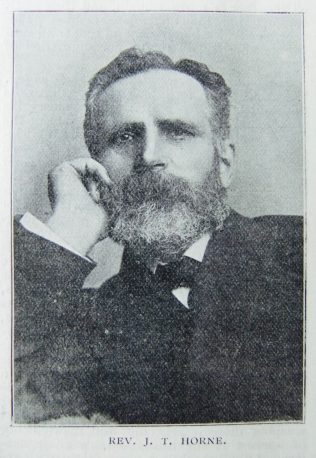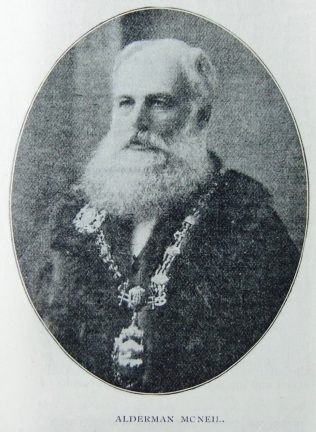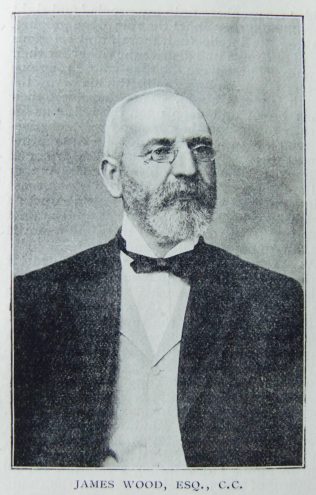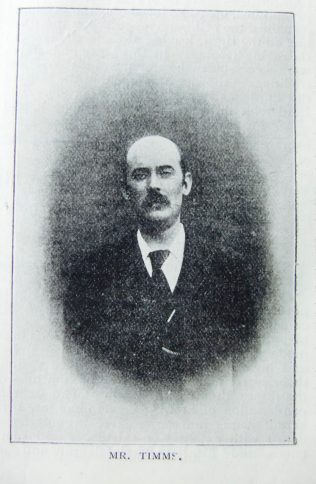Crewe Heath Street Cheshire








Transcription of Article in the Christian Messenger by John T. Horne
Every Circuit has its ‘Mother Church,’ and any record of the development of that sphere of Christian activity should begin with a description of the origin of that ‘Mother Church.’ If we could write the full history of these centres of holy toil we should have a narrative of consecration and a story of creation proving that these churches came out of the poverty of their members, who built them as a ‘refuge from the tempest, and a covert from the storm.’ These ‘temples of His grace’ grew out of weaknesses and tears, out of passions and pains, yea out of Gethsemane itself. Their foundations were laid in poverty, and the courses were cemented with holy tears. They were built by people who were very poor, for there was not much money stirring amongst those noble men who prepared the splendid heritage into which we have come. They had but little, yet that little was freely given, and it is astonishing how far a little will go if it is under the management of a passionate and heroic nature. Those early workers were ploughmen, rustics, artizans, and servant-men, who had to resort for help to the collecting-book, and all other honest kinds of economic ingenuity. They had no rich endowments nor parliamentary grants, so out of their poverty they built those early churches; and as one thinks of the manifold and pathetic sacrifices out of which the churches came it is enough to awaken in him ‘thoughts that do lie too deep for tears.’ To us they may seem poor and altogether unattractive with their naked walls and comfortless benches, but if we only remember the discouraging conditions amidst which they were built, we must regard them as magnificent efforts. The builders were not disheartened by their difficulties, but heroically wrestled with them, and made those would-be hindrances ‘stepping stones ’ to nobler things, and contribute to the accomplishment of their desired end. The history of our Heath Street church is a good illustration of this general truth.
If tradition be a reliable authority, the first Primitive Methodist service at Crewe was conducted by the late Mr. Thomas Wood, of Nantwich, who in his day was a very popular and powerful local preacher of an aggressive type, and whose nephew, Mr. James Wood, of Willaston, has reproduced some of the best qualities of his revered uncle, and is a very popular local preacher, whose services are in great demand for ‘specials’ in the Tunstall District. The novelty of an open-air service, with its lively singing, and a speaker of good natural powers, with deep and genuine religious feeling, succeeded in attracting a congregation. If their wealth and social position can be measured by the collection taken during the service, the people who formed the first meeting were not richly dowered, for the total only reached fourpence half-penny. That was surely a poor beginning for the establishment of a church. But the seed scattered by that earnest worker was not lost. An unseen, but Divine hand seized the falling grain, and according to the gracious promise, mysteriously multiplied it, causing it to bring forth the rich harvest we see to-day, with the potency of yet richer returns in the coming days. We do not know the names of any who composed that first congregation. Many have long since gone to ‘the undiscovered country, from whose bourn no traveller returns;’ but not one of them could have realised the far-reaching effect of that afternoon service. The enthusiasm of the speaker was communicated to his little band of worshippers, and divinely kept alive, until it is now represented by six vigorous churches, which exert a mighty moulding influence in the moral and religious life of the borough of Crewe.
This first service was quickly followed by the formation of a ‘society,’ which for a time met for Christian fellowship in a small cottage in what is now Market-street. These cottage services are inseparably linked with some of the most precious memories of the early struggles and victories of Primitive Methodism. Within the bosom of this infant Church there was a potency which compelled its members to justify to the outsiders their deep convictions on the great question of man’s need of salvation, with the result that their numbers rapidly grew, and the organism manifested wonderful creative power. Those men believed in positive and constructive work. Before the Church was three years old the necessity arose for adapting themselves to the needs of the growing congregation, and the rapidly increasing population of the town. Want of adaptation spells death to a Church as well as to commerce. To the honour of those early workers be it written, they secured for their first home the best position in the town. The increased facilities for Christian work which the new Church afforded was accompanied by continued growth of membership, and the influx of artizans to the town, resulting from the continued developments of the railway works, brought increased and increasing congregations to the services. It soon became evident to the responsible officials that if they were to prove themselves worthy of their position they would have to attempt something on a gigantic scale. It was an undertaking which required mighty faith, but in the name of the Lord of Hosts they resolved to move forward. A most valuable plot of ground was secured in the very heart of the town, in Heath-street, and in 1854 the old Heath-street Church was erected. This piece of work was a severe strain upon the slender resources of a Church composed of working people, but things had reached such a crisis that the only alternatives were to build or turn away the would-be worshippers. The latter was foreign to the genius of Primitive Methodism; the former was therefore adopted. There was life in the Church, and life meant growth, and growth gave the promise and potency of supplying all the requisites for the increased tax upon the financial resources of the congregation. The best traditions of our Church accentuate the marvellous faith of these early workers. It was a tremendous undertaking, but their faith was equal to the demand, and facts have many times shown the wisdom of their conduct.
The same growth attended the Church in its new home, and once more, eleven years later, the old question again presented itself. Shall we turn away the people or provide a still larger place? The ground on which to build was, fortunately, already secured, and the existing church was required for school purposes. The social positions of the members had considerably improved, and their faith, their heroism, their enterprise had grown, and the time seemed favourable for extension, and in the year 1865 we have to mark another step in the development of our church, by the erection of the beautiful and spacious ‘Wedgwood Church,’ along side the old Heath Street Chapel, which the trustees converted into school premises.
We must pass over a period of thirty years before we reach the next important structural development. During that space of time a generation had gone, and many far reaching changes had occurred. The social position of many of the members had improved, their habits of thought had been modified and their horizon had widened, and their methods of Christian work had been influenced by their social and intellectual growth. The results of the epoch-marking legislation of 1870 were being powerfully felt, especially in the Sunday school work and appliances. The necessity became urgent for a further adaptation of the old building for Educational purposes. A reconstruction and enlargement had become imperative if the Church intended to maintain its position as a leading organisation in the moral and religious life of the borough. Accordingly, in 1897, the old school building was replaced by a Lecture Hall, Assembly Hall, and fourteen Class Rooms, with all modern improvements, at a cost of upwards of £2,000, making the whole block of premises a splendid centre for Christian work, and a credit to the Connexion.
While this work was developing at Heath Street, a very ornate and commanding sanctuary was erected in Mill Street in 1866, at a cost of £3,000. With the growth of the western part of the town the aggressiveness of the Church was also shown by the erection of the massive structure in Ramsbottom Street, which involved the expenditure of £1,558. The northern part of the borough was now being rapidly covered with dwellings, and it was decided to provide for the religious needs of the people, and £800 was expended in building the Church in Henry Street, which contains a vigorous society. The growing population necessitates the replacement of the present school-chapel by a larger and more convenient structure, for which a magnificent site, embracing two thousand square yards, has just been purchased. The fifth church was built in 1896 at Herbert Street, at a cost of £250. The year 1890 saw the sixth built at Bradfield Road, at an estimated value of £500, and the church is still stretching out, for it is proposed to build a seventh church to meet the needs of the growing population in the South West part of the Borough.
To tell the history of the principal workers in the establishment and development of the Church would be to repeat an old story. Some of them have long since gone to their reward, some have gone to lands far distant ‘and with strangers made their home,’ a few have left us and are now earnest workers in other Christian communities, whilst the children of others are still true to the church of their sires, and are heroically carrying on the holy work which their fathers commenced. Where all did so well, it would be resented as a wrong done to the memories of those venerated men, if we named any single individual as the founder. In various degrees all contributed to the work, and that should entitle them to occupy a place in any sketch of the rise of Primitive Methodism in Crewe. They were a noble company of men, of untainted orthodoxy, free from sectarian virulence, intent only upon the first truths. In labours and sufferings they were equal to the most zealous, perhaps surpassing their contemporary workers in simplicity of purpose. As ‘ambassadors for Christ,’ they entreated men everywhere in Christ’s stead to be reconciled to God. For success in their works they relied upon a power extrinsic to themselves; they so commingled with the omnipotence of Heaven that the thought of their own insufficiency passed out of their view. Many interesting stories are told which throw side lights upon their manner of life and their method of expounding the Bible, and which plainly indicate that the powers of the world to come and the brightness and efficacy of the Gospel gave them their inspiration. In some respects they were prophets, seers, speakers fresh from God, who delivered His message to their age. One positive result of the investigations now taking place in relation to the Old Testament history is to restore the old prophets to their true place in the history of religion. They are now being shown to us as forth-tellers of divine and eternal realities far more than foretellers of literal events, and in this sense we may claim that the founders of our church were successors of the prophets, if not of the apostles. They were organs of divine communication, chosen channels for conveying God’s Message to their age; men who stood in the secret place of the Most High, and made it a pulpit from which to preach righteousness – a watch tower from which to act as Heralds of the Dawn. They were men whose souls were open to divine illumination, and whose deepest being was stirred by the call to thrust aside hesitations, timidities, and insincerities – brave men, ready for the battles of the Lord, men who loved only the good and disdained the evil, anxious to speak the truth and do the right, leaving the consequences in the divine keeping. In this sense our fathers were successors of the prophets, and the noblest traditions of the church prove that the word of the Lord was like a fire in their bones. The Lord took them from tending the flock, and said, ‘Go prophesy unto my people,’ and right worthily did they enact the role of the prophet, making the intellectual, moral, and religious life of our town and district the richer for their advent. These were the men whose religious history is intermingled with the history of the Heath Street Church. They have left their mark broad and deep upon the religious life of their town, and their memories are cherished with an ardour and intensity amounting almost to idolatry. We listen with profound feelings to some of the older members as they tell of the holy determination with which these saints pursued their work, and of the unction which accompanied their words, and are not surprised to learn that their translation moved the townspeople to public mourning.
As we linger over the past, and contrast it with the present, we are compelled to ask:- What hath God wrought? Sixty years ago we were not a people at Crewe. To-day there is hardly a family in the town but what has been directly benefited by our work at Heath Street; many of the principal townsmen have in one way or other been connected with the Church. We now occupy a commanding position in the growing borough. Our influence is powerfully felt in shaping its destinies, moulding its life, and administering its laws. Our circuit steward, Ald. McNeill, C.C., J.P., has been four times elected to the Civic Chair, and by public subscription, a magnificent oil painting of him has been placed in the Council Chamber. When we think of these things, we draw inspiration from the fact that He has been our fathers’ help is our hope for the days which are to come, and whilst we thank God for the work which our holy sires accomplished in His strength, we resolve to prove that we are deserving of the honour He has put upon us in giving us a place in succession to such noble men
Editor’s note: There is an account in the Primitive Methodist magazine of the opening of Crewe Primitive Methodist chapel in March 1855 which probably refers to Heath Street. You can see more detail here.
References
Christian Messenger 1901/274





No Comments
Add a comment about this page